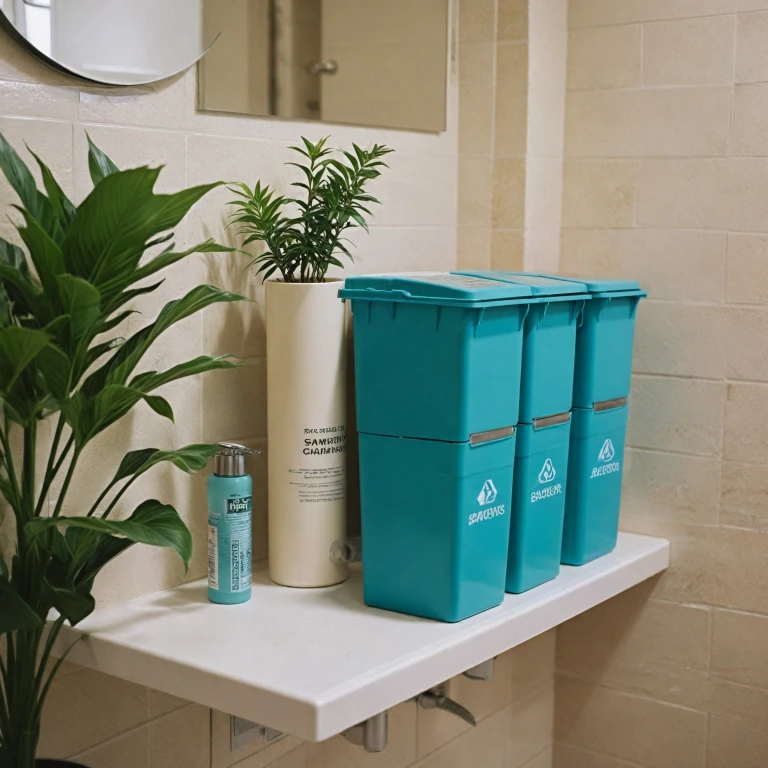Understanding the Environmental Impact of Razor Blades
Environmental Effects of Disposing Razor Blades
When contemplating the topic of recycling razor blades, it's crucial to understand their environmental impact. The convenience of disposable razors and safety razors comes with a downside: these blades contribute significantly to global waste due to their materials and the frequency with which they are discarded.
Often, razor blades are made from a combination of metal and plastic, materials that are notoriously challenging to recycle. The dilemma lies in the complexity of separating these components, as standard recycling facilities are usually not equipped to handle such mixed materials. This results in many blades ending up in landfills, where they can take years to decompose, thus exacerbating pollution problems. Additionally, the plastic packaging used in most razors further contributes to this issue.
Recycling options such as TerraCycle programs and specialized recycling centers promote alternative methods for waste reduction. Implementing a recycling program for razors and understanding how to safely prepare blades for recycling can significantly mitigate the adverse environmental impact.
For those passionate about environmental care and reducing razor blade waste, exploring innovative recycling programs and considering a switch to more environmentally-friendly shaving alternatives like wet shaving with reusable blades may also be beneficial. Interested readers can also check out this
guide on mastering blade sharpening to extend their lifespan and further lessen waste.
Types of Razor Blades and Their Recyclability
Various Razor Blade Types and Options for Recycling
The first step in effective recycling is understanding the different types of razor blades available and their recyclability. Razor blades come in various forms, including disposable razors, cartridge razors, and safety razors. Each has distinct recycling challenges and processes.
- Disposable Razors: These are typically a combination of blades and razors plastic, which can make recycling more complex. Terracycle programs sometimes offer recycling solutions for these items.
- Cartridge Razors: Similar to disposable razors, these involve both metal and plastic packaging. Some shaving brands offer specific recycling programs for cartridge replacement.
- Safety Razor Blades: These are usually made entirely of metal, which makes them more straightforward to recycle compared to razors with mixed materials. Safety razors often generate less waste as only the blade requires replacement.
To simplify the recycling process and ensure safety, it’s important to understand how to separate materials where needed and utilize drop points or public drop locations for recycling programs that accept mixed materials.
For detailed guidance on sharpening and maintaining your blades to extend their usable life, visit
mastering the art of sharpening clipper blades. This can help reduce waste and prolong the lifespan of your shaving products. Engaging in such practices is essential not only for waste reduction but also for maintaining effective personal care routines.
Steps to Safely Prepare Razor Blades for Recycling
Preparation Steps for Safe Disposal
Recycling razor blades involves a few preliminary steps to ensure safety and effectiveness. It might seem straightforward, but proper preparation prevents potential hazards. Here’s a quick guide to facilitate your recycling process while also addressing environmental concerns.
- Gather Used Blades: Start by collecting your used razor blades and disposable razors. It’s essential to handle them carefully to avoid injury. Consider using a designated container like a blade bank or a small tin can.
- Secure the Blades: Once you’ve gathered a satisfactory amount, make sure they are securely stored to prevent accidental cuts. You can use an old shampoo bottle or fashion a DIY blade bank if a specialized container isn't available.
- Remove Non-Metal Components: If the blades are encased in a plastic holder or come with plastic packaging, try to separate these before recycling. This ensures the metal can be processed appropriately. For information on handling plastic components, platforms like TerraCycle recycling program may offer specific solutions for recycling razors plastic.
- Label the Container: Clearly label the container indicating that it contains sharp objects. This is useful for drop points and recycling centers to identify and handle the contents properly.
- Locate a Drop Point: Once the blades are prepared, identify a suitable recycling program or public drop point for proper disposal. Many recycling centers accept metal scrap, and programs often provide free shipping labels for convenience.
Ensuring these precautions are in place makes a big difference in streamlining the recycling process. It also significantly minimizes the risks associated with handling sharp objects. For those interested in understanding how to manage your shaving tools while traveling, check out our guide on
navigating air travel with your electric shaver.
Where to Recycle Razor Blades
Locating Appropriate Drop Points for Razor Blade Recycling
Recycling razor blades, while beneficial, involves identifying the right places to drop them off safely. Here's how to navigate your options:
- Local Recycling Centers: Begin by researching nearby recycling centers or waste management facilities that accept metal products. Not all centers handle razor blades due to safety concerns, so it's crucial to contact them in advance.
- Specialty Recycling Programs: Organizations like Terracycle offer specific recycling programs where you can enroll for free and recycle razors and blades. They provide a shipping label and often cover shipping costs, making the process convenient.
- Public Drop Points: Some retail stores or pharmacies set up special bins for razor disposal within recycling programs. These are particularly useful for disposing of disposable razors and plastic packaging safely.
- Blade Banks: For those who practice wet shaving and use safety razors, purchasing a blade bank is a practical solution. These containers securely hold used razor blades until they are ready to be recycled, reducing the risk of injury during transit.
Remember, while disposing of razor blades, safety should be the priority. Ensure blades are stored securely before they reach their final destination, minimizing potential harm in the recycling chain.
Innovative Recycling Programs and Initiatives
Exploring New Avenues for Razor and Blade Waste Management
Innovative recycling programs and initiatives are emerging as consumers and companies alike seek more sustainable solutions for managing razor blade waste. These programs offer alternatives to traditional recycling methods and make it easier for individuals to participate in eco-friendly practices.
One such initiative is Terracycle, a global leader in recycling hard-to-recycle materials. Terracycle's razor recycling program allows users to recycle razors, blades, and even the plastic packaging by providing convenient drop-off points or free shipping options. Participants can collect their used items and either drop them at designated public drop centers or ship them using a free shipping label provided by the program.
Some brands have begun offering blade bank systems, where used blades from safety razors can be safely stored until they are ready for recycling. Typically, these blade banks are made of durable materials that prevent any safety hazards, ensuring the blades are contained securely until they reach the recycling facilities. These systems enhance safety during the recycling process and reduce the hazard of handling used blades.
Another noteworthy initiative involves collaborations between manufacturers and local recycling centers aiming to boost the recyclability of razors plastic components. By encouraging users to send in their disposable razors along with the plastic packaging, these programs emphasize proper care in disposal and support a closed-loop recycling cycle.
Wet shaving enthusiasts are also benefiting from these efforts as shaving sets designed with sustainable materials and recycling in mind become more popular. Many programs offer incentives such as discounts or rewards for users who engage in responsible recycling practices.
Through these innovative programs, consumers are gaining more accessible and safe options to responsibly dispose of their razor blades, reducing environmental impact and participating in a more sustainable shaving routine.
Tips for Reducing Razor Blade Waste
Smart Choices to Minimize Waste
Reducing waste generated by razors and blades is not only beneficial for the environment but can also be cost-efficient over time. Here are some practical tips:
- Opt for Reusable Safety Razors: Safety razors are a great alternative to disposable razors. They generally come with a metal body and require only the blade to be changed, significantly reducing plastic waste.
- Choose Quality over Quantity: Invest in durable, high-quality razors and blades. Although the initial cost might be higher, they provide a more consistent shave and last longer, reducing the frequency of replacement.
- Engage with Terracycle Recycling Programs: Many companies partner with Terracycle, which offers free recycling drop points for blades and razors. Look into programs like Gillette's public drop-off or mail-in services for a convenient recycling option.
- Minimize Plastic Packaging: While purchasing shaving products, choose those with minimal plastic packaging. Some brands offer blades in bulk or package-free options that reduce unnecessary waste.
- Blade Banks for Collection: Use a blade bank to safely store used razor blades until they are ready for recycling. This ensures blades are not mistakenly discarded in regular waste, causing harm or injury.
- Consider Shaving Sets: Shaving sets often include a reusable razor, brush, and stand, reducing the need for disposables and plastic packaging.
- Seek Out Local Recycling Programs: Before discarding razor blades, check if local recycling centers have specific programs for blade recycling to prevent contamination of regular recyclable materials.
These steps not only aid in reducing environmental impact but also enhance the safety and efficiency of your shaving routine. By making informed choices, you contribute significantly to sustainability efforts and ensure safer handling of disposed blades.

